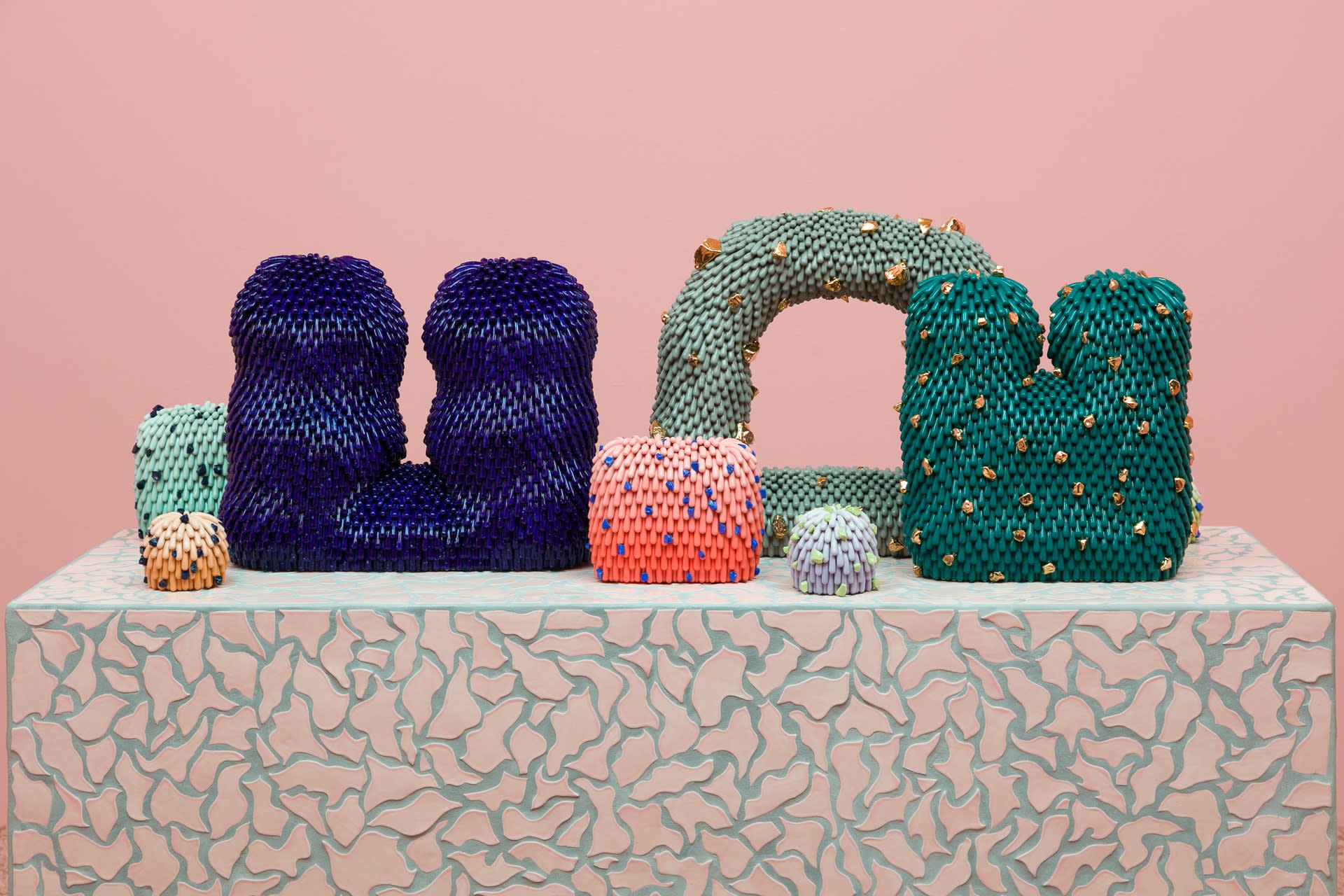Code as Creative Medium
Ceramic
Lantern Vessel in Collage (2024)
Jolie Ngo

Close-up view of Lantern Vessel in Collage, 3D-printed ceramic inspired by Vietnamese silk lanterns.
Ngo blends 3D-printing technology with hand-painted imagery influenced by the digital aesthetics of her childhood, as seen in Minecraft and The Sims. A Vietnamese-American creative, she also references her heritage. Faceted forms echo the look of traditional silk lanterns, while layered textures recall the topographic views of rice paddies.
- Anna Zappia, Design Milk

Studio photography of Ngo’s 3D-printed ceramic series.
Let’s Discuss
- What parts of this art were made by hand? What parts were made by a computer?
- How does code expand the definition of craft?
- How does technology help artists explore identity and culture?
Dust Furries (2019)
Linda Nguyen Lopez

Dust Furries, a collection of 3D-printed ceramic.
These soft-looking clay creatures, Dust Furries, were inspired by how particles move in computer simulations. These forms, reminiscent of dust bunnies or organic growths, play with the idea of randomness and structure, showcasing how code can inform and inspire physical artistry.
With verbal meaning so imprecise and mutable, visual language became my way of expressing the world. Clay, whose malleability allows me to create objects that appear soft and playful, has allowed for endless possibilities.
-Linda Nguyen Lopez

Installation view at the ʎpoqǝɯos exhibition, David B. Smith Gallery, CO
Let’s Discuss
- What emotions do these shapes bring up?
- How might this work shift our understanding of what kinds of forms or textures code can generate?
- How can code influence the way we make objects in real life?
Tip: Developed by the Machine Agency Lab at the University of Washington, p5.fab brings p5.js and 3D printing together.